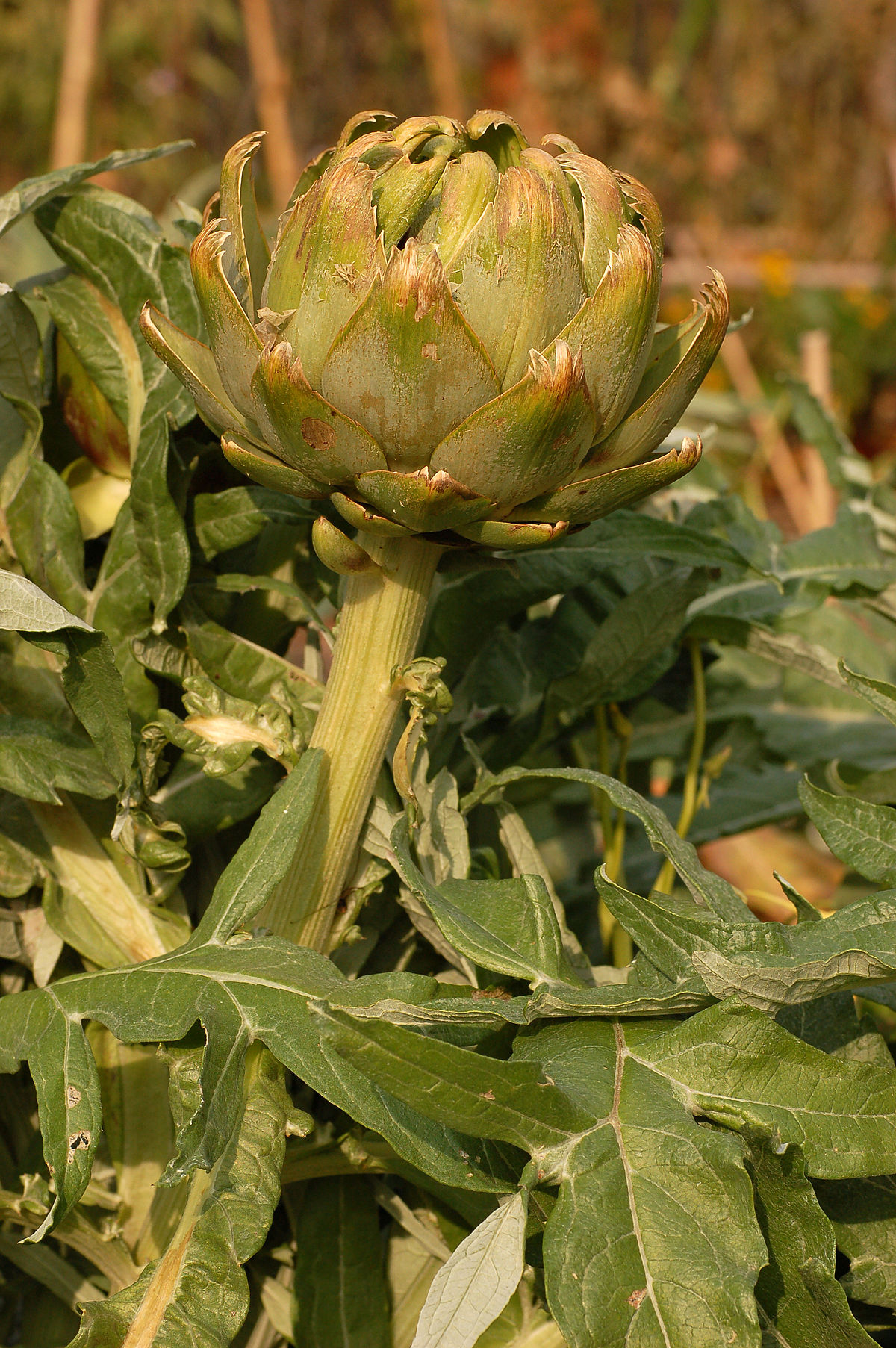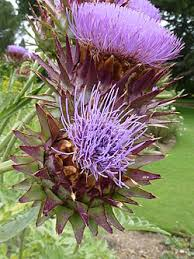Artichoke
Scientific Name: Cynara scolymus
Climate: Temperate and cold
Plant Description: Herbaceous perennial plant, grows up to two meters high, with simple, ribbed or grooved and deciduous stems. Leaves have a spiny tip, without hairs on the upper side and with hairs on the underside. Its flowers are blueish or violet. It will be perennial if there is no frost damage.
Cultivation: Most commonly cultivated from stalks or cuttings. This consists of pulling out the lateral stalks from the artichoke plant (the central stalk is discarded, since it is the old plant and will not sprout), each stalk should have a minimum of three or four sprouts at the base, above the roots.
The stalks should be selected so that they do not have any defects, are not damaged, have no holes in the stems and are not rotten at the base. It is best to transplant the stalks between July and September in warm areas and from March to April in very cold areas. These should be planted in lines, about 70 cm apart and between lines, covering the soil with three to five centimeters of compost.
If you want to cultivate from seed, the best time is from March to June in a seedbed and transplant it when it has a height of ten centimeters. The time from sowing to harvest can take eight months to a year, while the stalks or cuttings can be harvested four or five months after planting.
Artichokes grow best in full sun or half shade. They need regular moisture but cannot withstand excess water or waterlogging at the roots. Artichoke plants can adapt to a multitude of soils, but prefer deep, sandy, fertile and well-drained soils.
 Uses: The artichoke is a tasty plant that can be used for dry eyes in drops, and for treatment of digestive discomfort. Used in the treatment of anemia, diabetes, fever, gout, rheumatism and urinary tract stones.
Uses: The artichoke is a tasty plant that can be used for dry eyes in drops, and for treatment of digestive discomfort. Used in the treatment of anemia, diabetes, fever, gout, rheumatism and urinary tract stones.
It has a lot of fiber which helps with digestion, purification of the liver, cancer prevention, and to reduce cholesterol. It can remedy or prevent diseases such as nervousness, anxiety, depression, and insomnia.
Pests and diseases: Aphids can appear if irrigation and nitrogen-rich fertilizers are overused, and can be controlled using soap preparations or garlic extract repellents. Other pests of the artichoke are the screwworm, snails or slugs, which can be collected by hand, or by putting eggshells or beer traps near the base of the plant.
En español: Alcachofa

